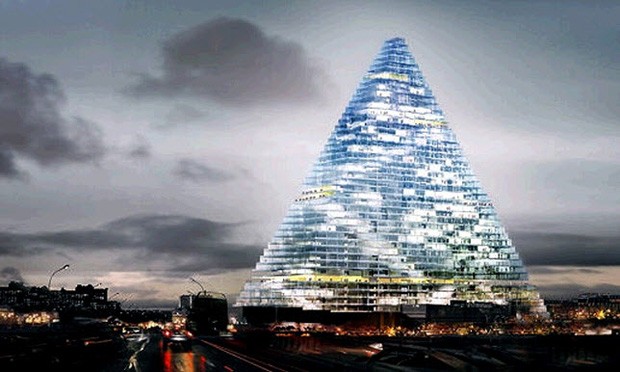
We’re used to the idea that large cities are melting pots of diversity where exposure to difference and new ideas promotes innovation and creativity.
However according to a report in The Wall Street Journal, a new study suggests bigger cities not only don’t promote diversity but seem to lead to its opposite, uniformity. The bigger the pond, it seems, the more selective we are about who we’ll swim with.
The WSJ reports that researchers from the University of Kansas found students at smaller universities have a greater diversity of friends – in terms of lifestyles and opinions on issues such as abortion – than students at larger institutions.
The researchers subsequently compared big cities like New York with small ones like Iowa City and came up with similar results. It seems bigger cities promote less diverse friendship networks – despite all that richness of choice, people are more insular than ever!
The WSJ asked Richard Florida, high profile author of The rise of the creative class, for his opinion on this apparent paradox:
Though big cities have more than their share of trailblazers, with gentrification they’re attracting wealthier and more risk-averse, group-oriented types. Hipster urban cultures can be just as monolithic, homogenous and creativity-squelching as any other.
Well yes, but I don’t find that explanation particularly illuminating. The reasoning offered by the researchers themselves is more enlightening. They say we seek out people who’re like us:
Social scientists call it the “similarity-attraction effect” and it influences everything from whom we date and hire to where we choose to live. The bigger the pond, the more likely we are—consciously or not—to swim around until we find a group of like and like-minded people.
As I see it, the “diversity dividend” of big cities lies in the greater probability you’ll meet people in them who’re just like you. A rabid Marxist whose grand passions are cycling, gardening and death metal will have a much better chance of meeting people with the same (possibly unlikely) combination of interests in New York or Sydney than in Armidale or Tenterfield.
Residents of big cities simply have more opportunities for “specialised” friendships than those who live in smaller places. The inhabitants of Tenterfield have a limited range of possibilities so they have to approximate. As a result they end up with a more diverse set of friends, both in terms of lifestyle and opinions.
However approximation isn’t the preferred outcome for most people. Given the opportunity, it seems people prefer their friends to be more like themselves rather than less.
I don’t think there’s really any paradox here. Big cities do indeed provide greater diversity and residents value that diversity highly. However they take advantage of it to fine-tune their friendship networks within tighter tolerances than they could ever possibly hope to do in a small place.
I don’t think there’s any surprise here either. It’s long been known that large cities are characterised by networks of similarly-minded people and firms. Newly-arrived migrants are an obvious example of groups who form networks with others from the same country for mutual social and economic benefit.
In some cases these networks have a distinct spatial manifestation. In the latest of his articles in The Australian comparing Australia’s two largest cities, Bernard Salt describes Sydney as a city with a rich tapestry of ethnicities and tribes:
The Chinese cluster in Hurstville, the Vietnamese in Cabramatta, the Indians at Harris Park and the indigenous at Redfern…..Baby boomers cluster in Palm Beach…..The residents of Chippendale are least likely of any of Sydney’s residents to believe in a god. The city’s most God-fearing community is to be found in Horsley Park.
A large, diverse city has thousands and thousands of over-lapping networks. While most of these connections won’t be defined primarily by geography, a degree of spatial differentiation on major characteristics – most especially socio-economic status – is inevitable in a diverse city.
Often that spatial diversity tends to be more evident when viewed at a large scale – the regional or metropolitan level – than at the suburban or neighbourhood level. Differences between neighbourhoods are often more apparent than differences within neighbourhoods. Cities are more like alphabet soup than consommé.
This is an important insight, because much of the public discussion about the benefits of greater spatial diversity assumes (often implicitly) that the objective must be to have ever greater “mixture” at the local level i.e. within the neighbourhood, the block, the street, even within the building. However that doesn’t seem to be the pattern characteristic of large diverse western cities, at least on some key characteristics.
Not everyone benefits from spatial clustering, though. The poor might get no advantage from congregating or it might even make them worse off. Nor do they always choose to cluster – the better-off might move out of certain suburbs leaving those with fewer resources behind.
There are some important policy debates in all this. For example, the SBS Insight team looked at the relative advantage of schools last Tuesday in a program titled Class Struggle. A key issue is whether or not selective public schools, which often draw on a regional or metropolitan-wide catchment, disadvantage local comprehensive schools by taking away the best and brightest and, if so, whether it’s worth it.







Crikey is committed to hosting lively discussions. Help us keep the conversation useful, interesting and welcoming. We aim to publish comments quickly in the interest of promoting robust conversation, but we’re a small team and we deploy filters to protect against legal risk. Occasionally your comment may be held up while we review, but we’re working as fast as we can to keep the conversation rolling.
The Crikey comment section is members-only content. Please subscribe to leave a comment.
The Crikey comment section is members-only content. Please login to leave a comment.